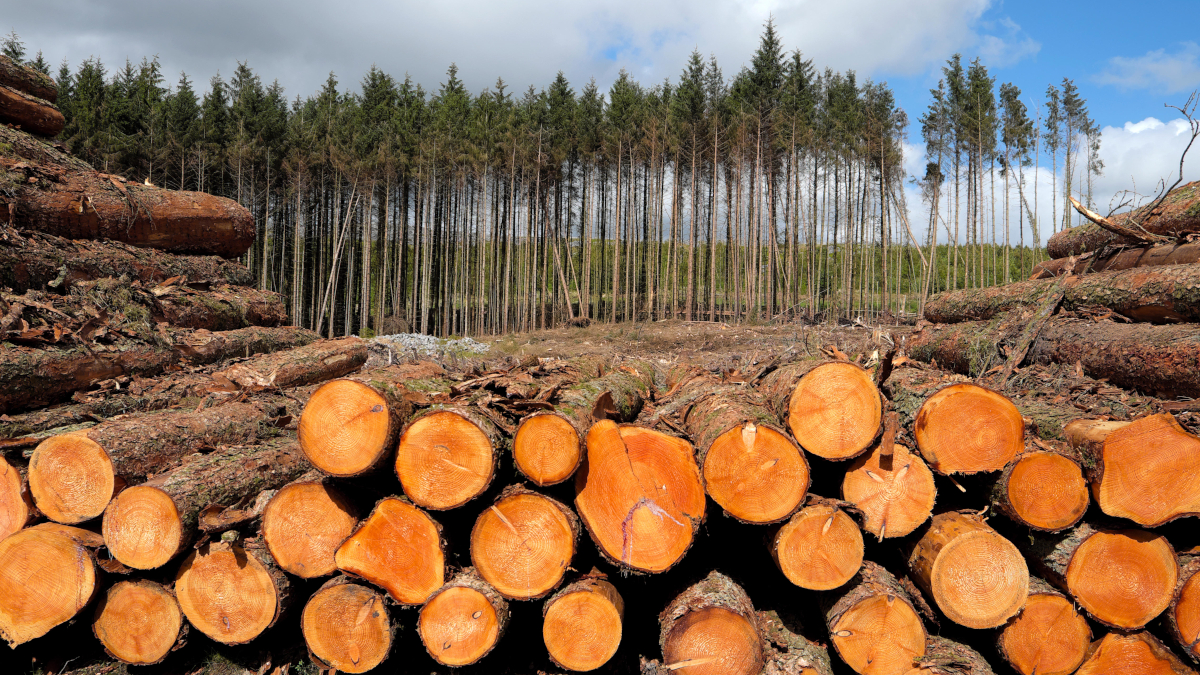Calculating the value of nature
Ecosystem services, provided free of charge by nature, have a value but also a cost if they are lost, says Monika Henn from Axa XL
Axa XL aims to establish a ‘comprehensive baseline’ for nature in its portfolio
Diverse ecosystems are vital to tackling climate change but, conversely, climate change is accelerating their loss. It is for this reason that Axa XL sees biodiversity as a natural extension to its climate efforts.
In Roots of Resilience, Axa XL presents the three pillars of its 2023 to 2026 strategy and goals – valuing nature, addressing climate change and integrating environmental, social and governance factors.
“It’s not just the sustainability team’s role to address these three pillars because everyone in the company has a part to play,” Monika Henn, senior sustainability manager and biodiversity lead at Axa XL, says.
“Nature provides significant resilience benefits – for example, mangroves are a very effective flood defence barrier – and our industry as risk experts have a vested interest in promoting risk mitigation solutions that already exist. Mangroves also have the additional bonus of providing environmental benefits such as carbon sequestration and habitats for biodiverse species.”
According to the UN Environment Programme, one million plant and animal species are now threatened with extinction, many within decades.
The UN’s Biodiversity Conference (Cop15) last year ended with an agreement – the Kunming-Montreal Global Biodiversity Framework – to guide global action on nature through to 2030.
Nature-positive investment
Recognising that nature loss poses a major risk to businesses, while moving to nature-positive investments offers opportunity, Axa is a member of the Taskforce on Nature-related Financial Disclosures (TNFD). The 40 taskforce members represent financial institutions, corporates and market service providers with more than $20trn in combined assets. The goal of the TNFD framework is to enable companies and financial institutions to integrate nature into decision-making.
“This year, we’re going to be looking across our entire portfolio, at all our product lines and risk consulting business, to see what our impacts are on nature, to establish a comprehensive baseline and use that to feed into our future goals,” Henn says.
“We also plan to work with external experts to quantify the financial value of nature, to make it measurable, so that we can integrate it better into our business.”
“Nature provides significant resilience benefits – for example, mangroves are a very effective flood defence barrier – and our industry as risk experts have a vested interest in promoting risk mitigation solutions that already exist”
Monika Henn
Axa XL
That exercise will require examining where relevant data is available and where it is not. “There’s huge potential for the industry to make a positive environmental impact if we can figure out the right levers and the right products,” Henn says.
“In claims handling, where there has been a loss, we can explore further how environmental protection and restoration can play a greater role. We already do that through supplemental coverage in our pollution and remediation legal liability policy, allowing clients to select green, sustainable materials during property restoration.
“Another lever is how we communicate with our clients and our brokers, including clients in our risk consulting practice. And a third lever is to consider how greater data and insights on nature-related risks can become useful tools for our underwriting,” she says.
In a recent report, PwC estimates more than half of the world’s GDP, equivalent to $58trn, is dependent on nature. This is up from $44trn estimated by the World Economic Forum and PwC in 2020.
Henn says: “When you consider the impact on supply chains from the droughts in Europe last year, from being unable to use rivers for the transport of materials and products, you can see how climate change is disrupting nature and that this is having an effect on economies.”
The value of nature
Measuring the value of nature differs from analysing climate change.
“Carbon emissions can be measured and are global, whereas biodiversity metrics are local and so doing a global-scale assessment of biodiversity impacts requires looking at multiple scales to understand the impact of climate change or business activities on nature, starting with a localised view,” Henn says.
“Conversations will vary, depending on the client, the project and the asset, but we will highlight nature wherever it is most materially relevant to help our clients develop greater resilience in how they manage nature-related risk.”
Axa XL has been working with The Nature Conservancy (TNC) on the creation of a resilience credit that values the combined carbon sequestration and coastal protection benefits of coastal wetlands. “Blue” carbon credits will tap into the established carbon credit marketplace and enable significantly more carbon to be offset than through a terrestrial credit.
Coastal wetlands are extremely important for hundreds of species – in the Indo-Pacific alone there are more than 600 species of fish living in an average mangrove ecosystem. But since 1940, 50% of all mangroves globally have been lost – with similar estimates for seagrass and salt marsh.
Axa XL highlights coastal wetlands can sequester and store CO2 for millennia and if they were restored to their 1990 extent, would have the potential to sequester enough CO2 each year to offset the burning of more than two billion barrels of oil.
The resilience credit – which can be purchased together with the blue carbon credit or separately – will quantify and invest in the added risk reduction benefits derived from preserving these natural flood barriers and from conserving and restoring coastal ecosystems.
“This is two pieces in one – carbon credit and resilience – for a focus on the land-water interface that will be so tangible to the work that we do as an insurance company helping to protect our clients from climate risk,” Henn says. “TNC is validating this innovation with a third-party carbon credit organisation right now and it’s something we at Axa XL hope to continue supporting.”
Water risks
Axa XL has also been working on the topic of water risks, which Henn says are not as widely understood as they need to be.
“A lot of businesses aren’t necessarily thinking about how to plan for future changes to water availability, so we have established a water advisory group, with some of our clients, non-governmental organisations and academics, to think about the role insurance can play in managing the challenges of water risk, including water scarcity,” Henn says.
In its Water Risk Insights report, Axa XL outlines three risks: physical, reputational and regulatory. It says companies may be planning for physical risk, but the other two risks are less widely considered, even though they can have just as significant an impact on business operations.
To ensure a “holistic” approach to biodiversity, Axa XL is working with a non-profit partner to launch a “backyard biodiversity” programme this year for its staff.
“We’ll be engaging our colleagues to see how they can improve biodiversity at their offices and at home in their local regions,” Henn says. “This programme will provide country-specific recommendations for colleagues, such as how to select and plant native species of plants in their own ‘backyards’, as a variety of vegetation and pollinators are necessary to support both biodiversity and pollination,” she adds.
The UN estimates the loss of pollinators has put up to $577bn of crop output at risk. Land degradation, moreover, is estimated already to have reduced the productivity of 23% of the global land surface.
On the transition to net zero, Henn says technologies like renewable energy could also be approached with biodiversity in mind. For example, solar photovoltaics requires extensive land use, potentially disrupting biodiversity at the sites where they are located.
Henn says solutions could include placing pollinator plants around solar farms and ensuring there is space for wildlife. “It’s about recognising the potential impacts and then figuring out the best practices to mitigate them,” she says.
Integrating nature considerations
The market-led, science-based TNFD framework will enable companies and financial institutions to integrate nature into decision-making. Volume 4 of the TNFD beta framework is now out for market consultation. While TNFD is currently voluntary, some countries are beginning to require biodiversity reporting, including Article 29 of the French law on energy and climate, according to which French financial institutions will have to disclose their strategy for reducing biodiversity impacts.
Henn points out another set of guidance is emerging – the European Commission’s Corporate Sustainability Due Diligence Directive – which will require companies to identify and assess environmental harms and human rights violations across their value chains and to take action to prevent and eliminate them. In addition, the Net-Zero Insurance Alliance highlights nature-based solutions as a key consideration in the net zero transition.
“We’re looking forward to tying all those conversations together in our strategy on biodiversity,” Henn says.
As for the UN’s next biodiversity conference, Cop16 in 2024, Henn hopes for “a greater commitment to the preservation and restoration of land and making ecosystems in general more equitable”.
She concludes: “Just as there should be equity in the approach to climate risk, there should also be equity for biodiversity.”





